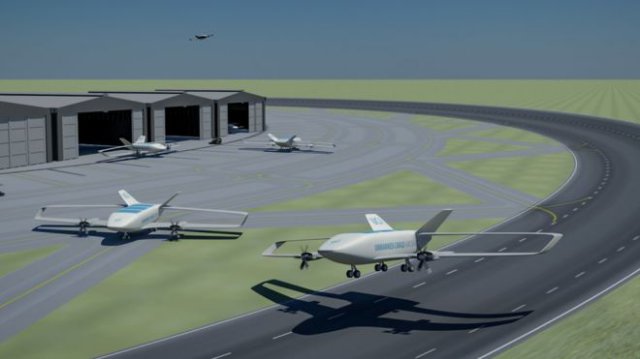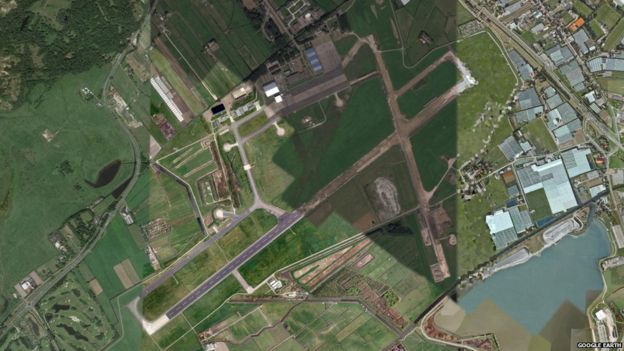The Dutch engineer behind the idea for circular runways at airports has revealed plans to build a test runway for unmanned delivery drones. Henk Hesselink is collaborating with Valkenburg airport, a disused naval base near The Hague, which has ambitions to become a drone innovation centre.
His design for circular runways at passenger airports captured global attention last year, in aviation circles and on social media.
The point, he explained, was to make more efficient use of space, reduce tricky crosswind landings and cut down on noise pollution.
Mr Hesselink, a senior research and development manager at the Netherlands Aerospace Centre, says growing demand for drone delivery services will call for “a network of drones, surfing distribution centres”.
While small drones will be used to deliver goods direct to your home, larger drone aircraft will be needed to carry goods to out-of-town distribution centres, he argues.
These larger drones would be of a fixed-wing design like aeroplanes, rather than the quadcopter design favoured by hobbyists. These are more fuel efficient, fly for longer and can carry more cargo.
But they need a runway to land and take-off – and this infrastructure, he points out, is not yet in place.
The circular runway concept comes at a perfect time,” says Hesselink.
Drones are subject to less stringent safety rules than piloted aircraft carrying passengers. This may get round some of the safety fears raised about using circular runways, including the risk of aborted take-offs or landings.
Mr Hesselink hopes that his circular runway project will be more widely welcomed as a solution for drone delivery logistics than it was as a proposal for passenger aircraft.
A drone airport takes up far less room than a traditional passenger airport, he points out.
A 300kg unmanned aircraft would only require a runway diameter of 600m, he says.
He is currently building a consortium of financial backers to fund the test runway at Valkenburg.
Source: BBC


